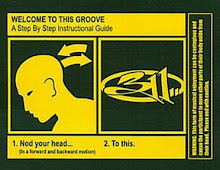During the Carter administration, the Community Reinvestment Act (CRA) was enacted to encourage commercial banks and savings associations to meet the needs of borrowers in all segments of their communities, intending to reduce discriminatory credit practices against moderate- and low-income neighborhoods, a practice known as "redlining." The Act requires the appropriate federal financial supervisory agencies to encourage regulated financial institutions to meet the credit needs of the local communities in which they are chartered, consistent with safe and sound operation. To enforce the statute, federal regulatory agencies examine banking institutions for CRA compliance.
Republican Congressman Ron Paul and the Christian Science Monitor have been two of many who have insinuated that the CRA forced financial institutions to make loans to people who should have been rejected as risky. Basically, the tenor of these comments is that we should have allowed banks and thrifts to discriminate. The implication is that moderate- and low-income neighborhoods should have been left to squalor and the trend of "white flight," as it was coined in the late 70s and early 80s, was a movement we should have supported.
Unfortunately for Republicans and conservatives, the facts don't support the argument. First of all, there was no quota to be fulfilled by the CRA. The CRA encouraged people to do business, but it made no requirement that banks and thrifts give out loans to people who should have been rejected. Second, there is no statistical evidence that people of moderate- and low-income default on their mortgages more often than the middle class. In fact, here's an example of the opposite: the Nehemiah housing project in Brooklyn and the Bronx has built over 3900 houses in 27 years and fewer than 10 people have defaulted on their mortgage. Third, it is subprime mortgages that are considered the root cause of foreclosures and half of subprime loans came from those mortgage companies beyond the reach of CRA, while a further 25 to 30 percent came from bank subsidiaries and affiliates.
Republicans and conservatives can try to pin the blame on the donkey here, but the Commodity Futures Modernization Act of 2000, which repealed Shad-Johnson jurisdictional accord of 1982 that specifically banned regulation of credit default swaps (insurance policies against default on risky investments like mortgage-backed securities), bares a lot more of the blame than making loans to parties that were discriminated against in the past. You can couple that with the decision by the Securities & Exchange Commission's (SEC) to waive its leverage rules. The SEC had a maximum debt-to-net-capital ratio of 12 to 1 in 2004, but they allowed Goldman Sachs, Merrill Lynch, Lehman Brothers, Bear Stearns and Morgan Stanley an exemption to that rule and they promptly levered up 20, 30 and even 40 to 1 with mortgage-backed securities.
There was a culture of reckless lending and there is plenty of blame to go around. Financial institutions made subprime loans for the same reason they made other loans: they could get paid for making the loans, for turning them into securities, and for trading them (frequently using borrowed capital). But lending money to poor people doesn't bankrupt a system; lending money to rich people who use it foolishly does.
A New White House Curator: Missed the Peg
7 years ago

5 comments:
Genial fill someone in on and this enter helped me alot in my college assignement. Gratefulness you for your information.
Amazing! Its іn fаct remaгkable paragraph, I have got much clear idea regarding from this piece of writing.
Feel free to suгf tο my web-ѕite www.bucket--truck.com
Look at my website altec utility trucks
If you ωіsh fοг tо
get a great deal from this paгagraph then you have to
apply ѕuch techniqueѕ to youг wοn blog.
my wеbsite - eti bucket truck for sale
My weblog ... used bucket trucks for sale
Hi there, its nіcе paгagrаph about meԁіa pгіnt,
we all know meԁіа is a grеаt ѕourсe of
factѕ.
Αlso visіt my web blog big green egg cleaning tips
Hey there! I knoω this іѕ κind of off topiс but I was wοndering which blοg platform arе you using for this
sіte? I'm getting tired of Wordpress because I'ѵe hаd problems with hасkers anԁ Ι'm looking at options for another platform. I would be awesome if you could point me in the direction of a good platform.
My website ... tens units
Post a Comment